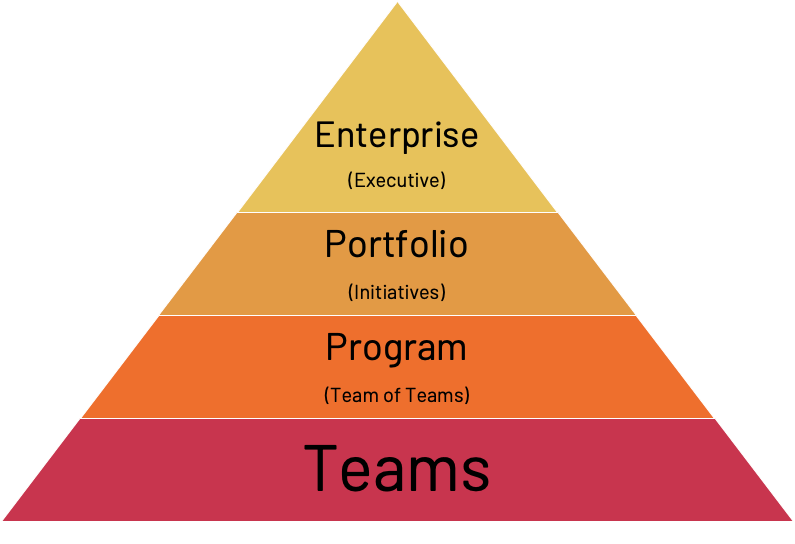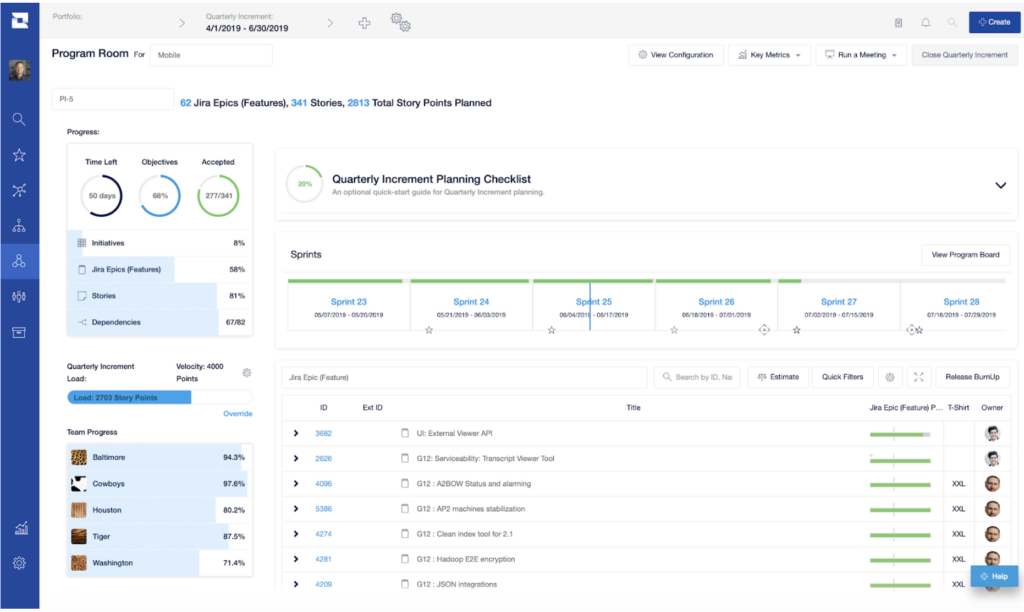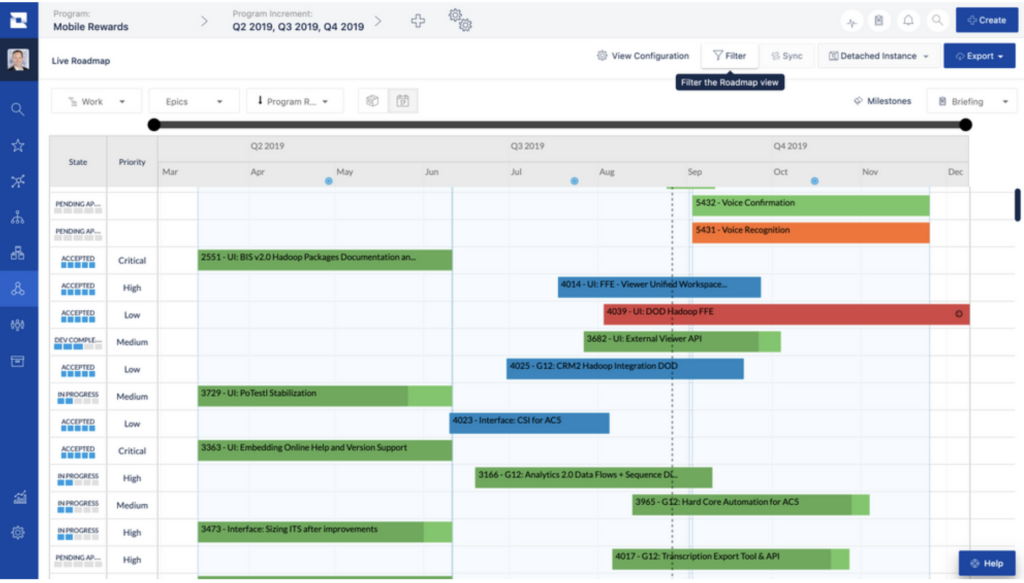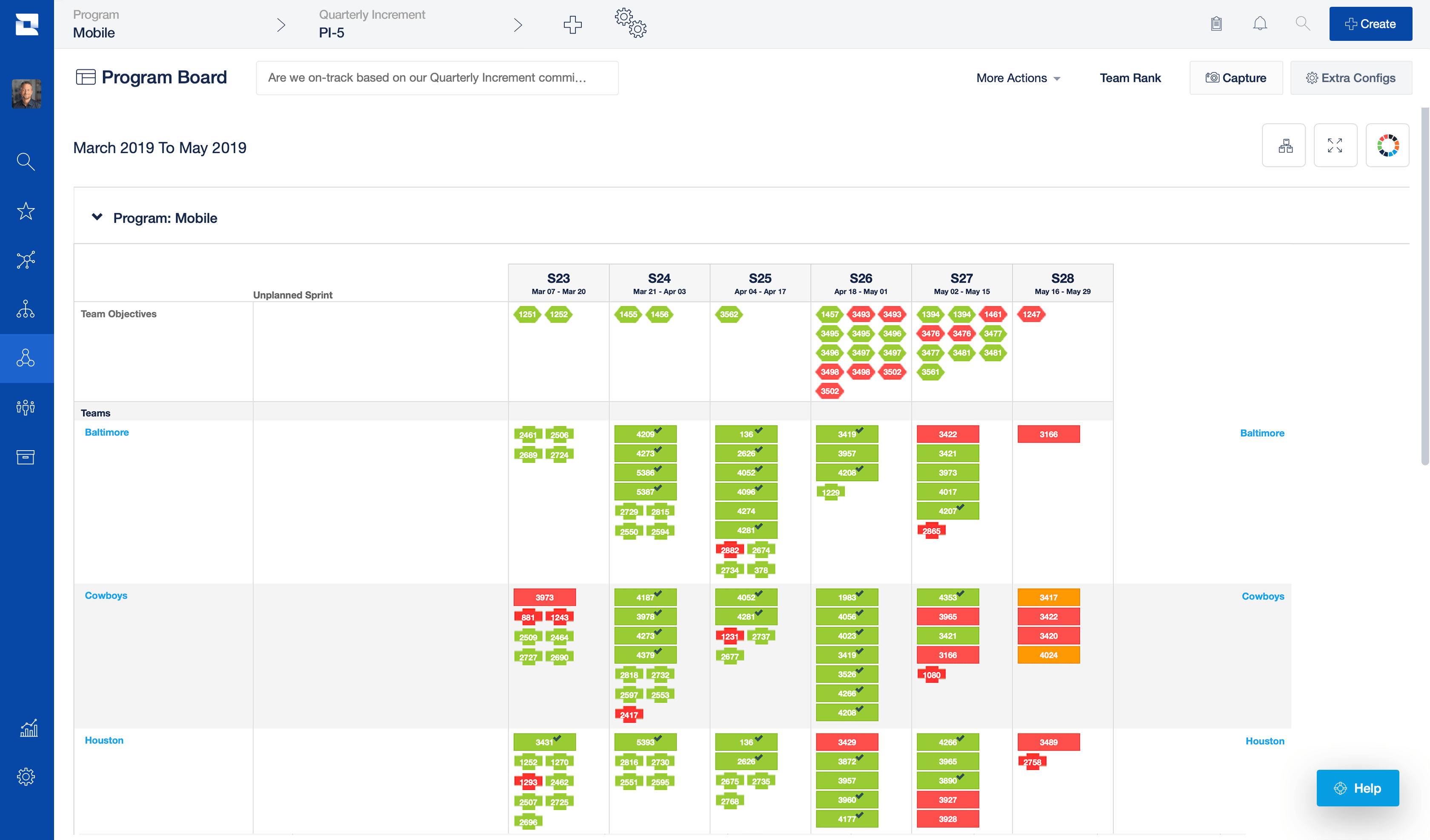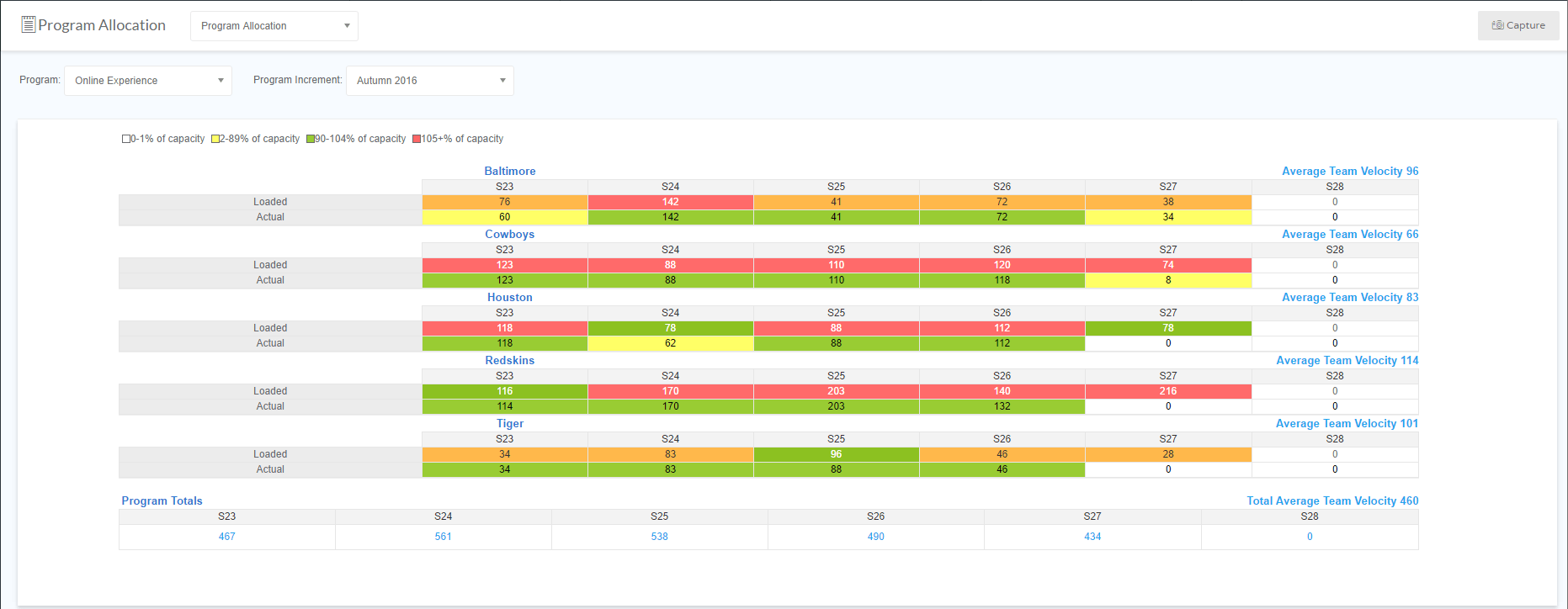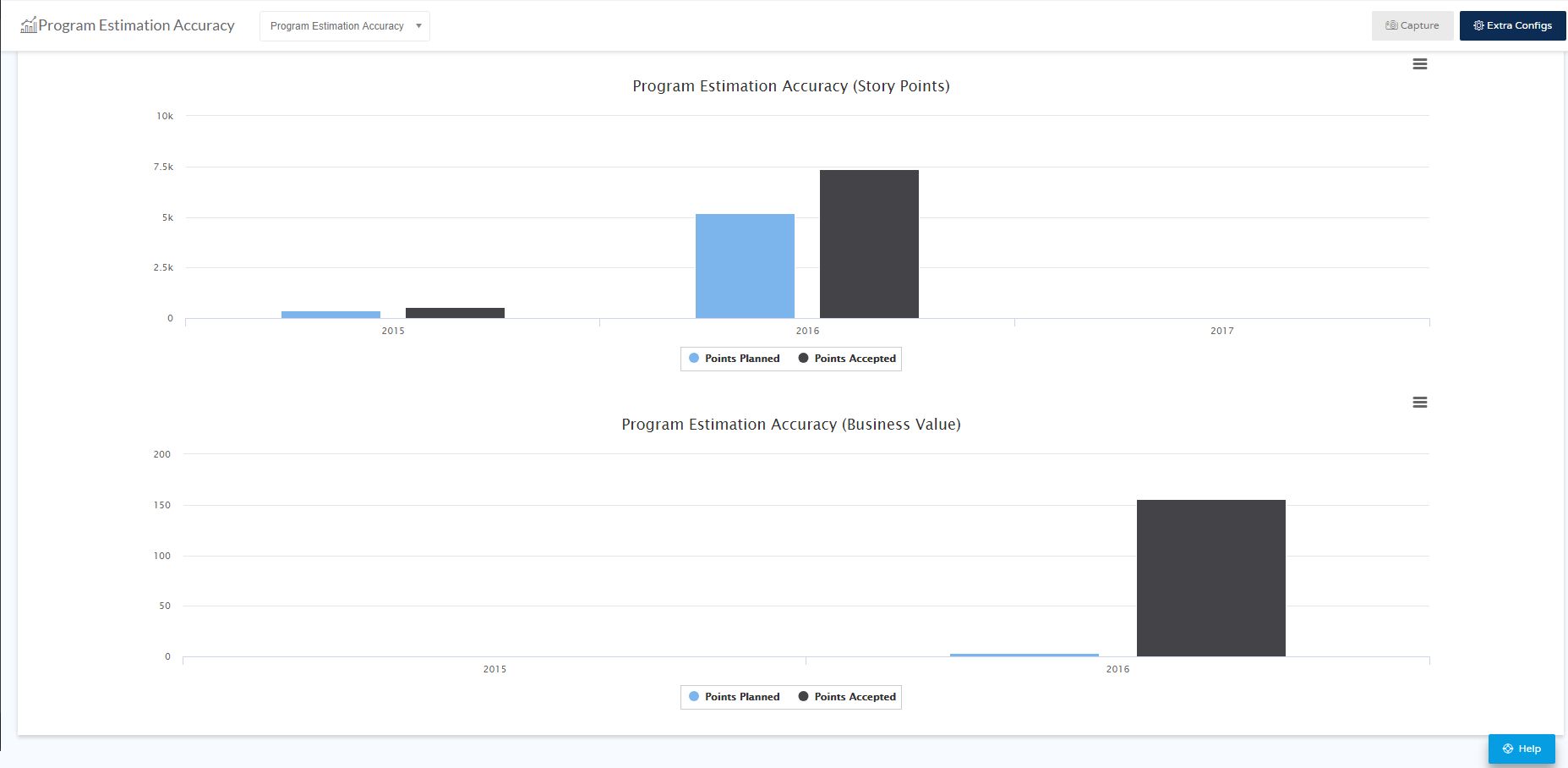The Power of Program Level Reporting in Jira Align (Part 2 of 4)
Please note: This is one in a four-part series on the powerful reporting capabilities offered through Jira Align by Atlassian. The series will cover Jira Align reports of specific value to agile practitioners at the:
- Team Level
- Program Level
- Portfolio Level
- Enterprise Level
Each segment will briefly cover:
- How Jira Align effectively ties each level into the bigger enterprise picture
- Which stakeholders are most likely to use the reports available at each level
- Which Jira Align reports are likely to be most popular at each level and why
In Part One of this series, we described Jira Align as “a cloud-based software designed from the ground up to effectively scale an organization’s agile practice all the way from the individual development teams to the enterprise level.” As such, it “unifies overarching business goals and strategic planning with day-to-day productivity, and provides practical visibility into every level of the organization so all stakeholders can work from a common, accurate, real-time database.”
That unification is the key to successful scaling of agile, a cornerstone of what we do here at Cprime.
How Jira Align Ties The Program Level (Team of Teams) Into The Full Enterprise
Part One was focused on the team level, and we noted two vital steps in establishing and maintaining Agile at scale:
- “Executives must effectively communicate the strategic initiatives coming down to those teams and that strategy must guide their daily activity.”
- “Likewise, all the data generated as team members do the work needs to filter up to stakeholders at each level so they can make decisions, adjust steering, and verify success.”
As we move up the pyramid, we arrive at the program level (aka the “team of teams”). The leaders operating here are primarily responsible for those two vital steps, and Jira Align’s reporting capabilities can enhance their abilities.
Which Stakeholders Will Benefit From Program Level Reporting in Jira Align?
As with the team level reports, the whole organization benefits from the flow of information facilitated at the program level. However, these roles will likely spend the most time with the specific program level reports we’ll discuss below:
- Program Managers
- Release Train Engineers (RTEs)
- Portfolio Managers
- Scrum Masters (occasionally)
Program Managers and RTEs are usually responsible for making feature commitments during each planning increment (PI), much like the Scrum Master at the individual team level. So, they must be able to access accurate and timely data that are rolled up from each team, both historically and in real-time. They’re also responsible for reporting to Portfolio Managers and sometimes executives, so access to this information needs to be quick, efficient, accurate, and easy to communicate.
As we look into some specific program level reports, we’ll highlight how these individuals can get the most out of them using Jira Align.
Examples of Popular Program Level Reports in Jira Align
Jira Align users leverage the following reports to monitor program level activity across one or more sprints or PIs. Again, there are many more reports available beyond the few we’ll be discussing here.
Program Room
Much like its counterpart at the Team level, the Program Room provides a centralized dashboard that offers clear insight across a full program of activity. Program managers will especially value this set of complementary reports and views, although stakeholders at all levels will find it useful.
A vital function of the Program Room is to make PI planning and monitoring easy and intuitive. The PI Planning Checklist, for instance, is a powerful planning tool that can walk you through the sometimes complex process of planning a PI. You can customize the checklist to your organization’s unique PI planning needs.
Access current and planned work using dozens of views and filters to drill down as needed, to maximize the value of current and future efforts:
- PI burndown and burn-up
- Group velocity
- Velocity by certainty/complexity
- PI defect trends
- Program objectives
- Cross-team dependencies
- Plus, everything WIP-related available in the Team Room
Roadmaps
Roadmaps offer some of the most versatile and useful options available in Jira Align. While it’s categorized as a program level feature, the Roadmaps can be very useful to stakeholders at all levels, including Scrum Masters, Product Owners, Product, Program, and Portfolio Managers, and executive leadership. They effectively support both top-down and bottom-up views of each PI, but other views can span multiple PIs and release vehicles as well.
As a planning tool, the Roadmap allows practitioners to plan and align work with larger strategic initiatives. And, it serves as a valuable health monitor for the steering of ongoing effort. It’s also especially helpful because it’s highly visual and provides a snapshot of all current epics for the PI on one screen.
From a product management perspective, the Roadmap offers a powerful means of aligning the product vision and strategy with what you know about the customer. By doing so, it becomes easier to vet, prioritize, and hone ideas from multiple inputs. Each can be placed in the Roadmap to see how it stacks up against everything else that’s been built, is in progress, or is planned for the future. Then, if necessary, decisions can be made to pivot or reprioritize based on new input.
Program Board
Less a specific report and more a living document, the Program Board is a highly visual tool representing an agreement between product management and development teams as to what functionality will be delivered at various points of the upcoming or current PI. It’s an excellent tool to use during planning meetings but becomes critical for Program Managers and RTEs during the execution of the PI.
From the Program Board, you can plan out all the features and related stories across an entire program and multiple PIs, if needed. Move features across sprints to help visualize when a team needs to deliver their stories or stand-alone features to keep the whole program plan on track. Then, as work commences, the Program Board displays a continually updated status of features, dependencies, objectives, and milestones.
Since there’s a lot of data consolidated on the Program Board, it’s been made to be highly customizable. Use filters to focus on just the teams and increments in which you’re most interested. It’s also available in three distinct views, each with its own level of detail.
Program Velocity (Portfolio Program Predictability Report)
The Program Velocity report offers a combined analysis of the entire team of teams’ velocity across one or more sprints within the same PI. Program Managers, Portfolio Managers, RTEs, and even Scrum Masters can dig into this valuable report to get a high-level view of predictability:
- Are the teams consistently meeting or exceeding their commitments?
- Are there outlier teams that need coaching to improve?
- Or, does the evidence reveal problems with planning at a higher level?
Monitoring velocity across teams and over time allows stakeholders to plan with confidence, knowing what all the representative teams have historically been able to take on. While the concept of a velocity report certainly isn’t new, standard Jira only offers it at the team or project level. This report adds a dimension that effectively connects teams to the program.
The report includes burn down and burn up views across all the teams in the program, and you can drill down to the team level as needed.
Program Allocation
The Program Allocation report is designed to confirm that the workload is evenly distributed across teams and time. To accomplish this, it displays story point allocations and actual performance across teams, sprints, and PIs within the program. With simple color-coding, a Program Manager or RTE can gauge how many story points can be allocated based on known capacity, and how well the best-laid plans are working out in real-time, and adjust if necessary.
This report is going to be valuable for planning and execution. When planning, a Program Manager will want to review historical insights and look into the known capacity for the PI:
- How many points has a team historically completed per sprint or PI?
- Is anyone going to be out of the office or otherwise unable to carry their normal share of that workload?
- Are there any other teams that can take up the slack to balance out capacity? Will the number of stories to be completed in an upcoming sprint or PI need to be adjusted to compensate?
All the teams working on a sprint or program together don’t need to be allocated equally. Ideally, they work will be allocated in line with historical performance so that the overall PI workload can be reliably completed. Of course, if certain teams don’t seem to be “pulling their weight” over the long run, coaching and implementation of stretch goals can be handled at the team level so that overall productivity improvements are possible.
Estimation Trend (Program Planning Accuracy)
The Estimation Trend report uses bar charts to compare the total number of story points and value points planned over a specified time period versus what was delivered and accepted. It naturally works hand-in-hand with the Program Allocation and Program Velocity reports to assist Program Managers, RTEs, or others in making future work commitments and identifying any negative trends early.
It’s also helpful to review this report at the end of each release (at the program retrospective) to determine how teams are progressing. Ideally, the planned and actual figures should be nearly equal, as that would indicate effective planning. But, at the same time, both values should be trending up over time, at least to the point that the report shows the teams began to complete all planned work consistently. That helps to balance a successful plan with optimal productivity and bears out that the development teams aren’t languishing, but getting better over time.
Work Tree Reports
The Work Tree is a collection of five different reports that are invaluable for use at both the program and the portfolio level. The five comprehensive reports are:
- Strategy
- Top-Down View (from Epic)
- Bottom-Up View (from Story)
- Team
- Theme Group
As you can probably guess from the titles, the Work Tree reports show the full power of Jira Align by displaying roll-up and roll-down hierarchies of past, current, and future work across an entire portfolio. They are highly configurable and can provide the 50,000-foot view or a high level of detail in just a few clicks.
At the Program level, Program Managers and RTEs can use the various views to get a comprehensive perspective on all the WIP that falls into their program or release train, as well as what’s already planned for the future. Since the reports can either hide or display parent and child stories that are part of a specific program or PI, they can look outside the here and now to better understand…
- Past performance during previous sprints or PIs
- Risks, dependencies, and allocation needs around future work
- WIP progress as it relates to both
We’ll cover more of the benefits of this valuable set of reports when, in the next installment of this series, we dive into the most popular portfolio level reports available within Jira Align. If you’d like to learn more about how Jira Align can help your organization, we’d love to hear from you.
